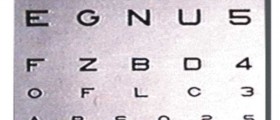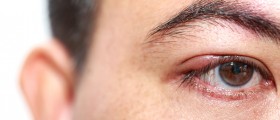
Chronic open angle glaucoma causes damage to the optic nerve due to elevated pressure within the eye. Left untreated, chronic open angle glaucoma can progress to permanent blindness. Therefore, this eye disorder must be controlled to slow its development and preserve vision. People aged over 40 years are advised to have a regular eye checkup which includes intraocular pressure test. What is Glaucoma?
Glaucoma is the medical term for a group of eye disorders that damage the nerve at the back of the eye, known as the optic nerve and can lead to vision loss. Most often, glaucoma is caused by high eye pressure. Although glaucoma can affect both eyes, it usually develops more quickly in one eye than in other.
Glaucoma can be classified into several types:Chronic open angle glaucoma – it is the most common form of this eye disorder. It progresses gradually and often goes unnoticed until the condition is quite advanced. In this disorder the angle between the iris and sclera is normal or open, thus the name open angle glaucoma.Acute angle-closure glaucoma – this form of glaucoma is caused by narrowed space between the iris and cornea. This eye disorder appears suddenly and is very painful. Secondary glaucoma – it can result from many conditions that create increase in eye pressure. It can occur as a side effect of corticosteroids or as a complication of an eye injury.Congenital glaucoma – it is congenital abnormality of the eye and is present at birth. Chronic Open Angle Glaucoma Overview
Chronic open angle glaucoma, also known as chronic glaucoma or primary open angle glaucoma occurs when channels (trabecular meshwork) through which the aqueous humor is drained becomes blocked. This causes buildup of the fluid resulting in increased eye pressure. The cause of blockage of the trabecular meshwork is unknown.
Elevated pressure within the eye damaged the main nerve of sight or the optic nerve which transmits images to the brain and the nerve fibers that run towards the nerve from the retina. This causes gradual loss of peripheral vision and may eventually lead to complete blindness.
Chronic open angle glaucoma can affect anyone. However, family history, diabetes, shortsightedness and eye abnormalities such as pseudoexfoliation syndrome increase the risk of chronic open angle glaucoma. Also, African-Americans are more susceptible to this eye disorder than Caucasians.
Treatment for Chronic Open Angle Glaucoma
Initially, chronic open angle glaucoma is asymptomatic and the condition is often first identified when significant visual loss occurs. That is why open angle glaucoma is often called “the silent thief of sight”.
Chronic open angle glaucoma is the leading cause of blindness worldwide. Therefore, the disorder must be damaged to slow down its progression. Treatment for chronic open angle glaucoma aims to decrease the eye pressure. This can be done with the use of eye drops, oral medications and glaucoma surgery.

















Your thoughts on this
Loading...